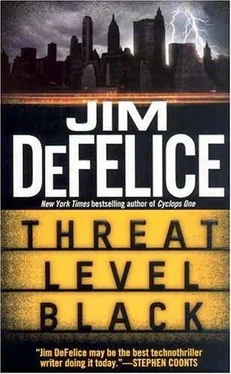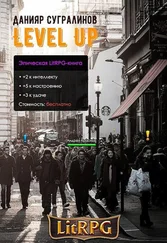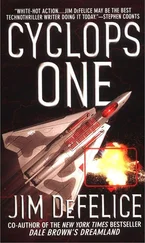MIME-Version: 1.0
X-Mailer: Internet Mail Service (5.5.2653.19)
Content-Type: multipart|alternative;
boundary=“--_=_NextPart_001_01C31BD1.3326
EE10”
There were various ways the actual route an e-mail took could be hidden, and the agent recognized one of the remailers as a kind of semianonymous clearinghouse in Asia that he’d seen in the course of another investigation.
“Can I keep this?” asked Fisher.
“Sure.”
Fisher got up. “Well, think about going,” he said.
“Where?”
“ Korea,” said Fisher.
“Why Korea if he’s going to be in Moscow?” asked Mathers.
Fisher decided the time was right for the ultimate weapon and unleashed the double-dog-drop-dead stare. Mathers’s breath caught in her chest and she swallowed whatever sentence had been lurking in her mouth.
“That’s all you want to know?” asked Kung.
“Pretty much,” said Fisher.
He stopped at the door. “I do have one other question,” he said, reaching into his pocket. “Do you have a smoking area?”
“That was your entire interview?” asked Mathers as they walked back to the car.
“Yeah.”
“I have to say, your interrogation style leaves a lot to be desired.”
Fisher went around to the passenger’s side, waiting while Mathers fiddled with the locks. The car was searched once again as they left. The search was thorough enough for Fisher to smoke two whole cigarettes and start on a third before having to get back in the car.
“I’d really appreciate it if you didn’t smoke in the car,” said Mathers. Her voice was so sincere that Fisher almost considered putting the cigarette out.
“Could you at least roll down the window?” asked Mathers.
Fisher could do that, and did.
“I shouldn’t have criticized you,” she said as they drove away. “I’m sorry.”
“Not a problem.”
“But if those were the only questions you were going to ask, why bother coming out here in the first place?” asked Mathers.
“Boss wanted me out of Washington,” Fisher told her.
“You figured the people at the company are listening in,” said Mathers a few miles later.
“I’m sure they were,” said Fisher.
“You don’t think you can trust them?”
“Haven’t a clue.”
“So, what do we do? Go to Moscow? Talk to her at home?”
“We find a place with really bad chili dogs and have some lunch,” Fisher told her. “I haven’t had a good case of heartburn in more than a week.”
Howe pushed himself down into the cockpit, listening as the NADT contract pilot gave him a few last-minute instructions on the Iron Hawk’s handling. Jeff Storey, the other pilot, was a former Navy man under contract as a test jock; Howe had met him a few times before. Storey was going to fly wing in a second plane while Howe took the Iron Hawk for a short familiarization hop, part of the campaign arranged by Dr. Blitz to convince him to take the NADT director’s job.
Howe had started early that morning with a tour of the headquarters building, where every single female employee appeared to have been instructed to wear the shortest dress imaginable. Following the flight, he would be taken to lunch at one of the area’s best restaurants. A briefing on more NADT programs was planned for late afternoon, and then he was supposed to join two senators for dinner.
Howe was actually looking forward to the flight. His aircraft combined a host of different technologies that, apart from its aeronautical abilities, demonstrated what NADT could mean to the military. But he was interested primarily in feeling the strain of gravity against his chest, and the giddy rush that the experienced pilot still felt when he goosed the throttle. He hadn’t been at the stick of a jet in months.
Howe’s aircraft had ostensibly started its life as a McDonnell Douglas T-45, an extremely airworthy and capable aircraft used by the U.S. Navy as a jet trainer but versatile enough to serve as a multirole fighter for foreign air forces. NADT had taken the basic airframe and reworked it for its own purposes. Among the many obvious changes were longer wings shaped in a modified delta, forward winglets near the fuselage that helped maneuverability, and a reworked cockpit area. While the new cockpit allowed only one pilot, not the two common in a normal trainer, it included a “bathtub” of titanium and a carbon-fiber compound designed as a kind of bulletproof armor to protect the pilot. The idea was that the Iron Hawk would be especially survivable on a close-air-support mission, where it might come under ground fire while swooping down to support troops.
Less noticeable improvements included the more powerful engine, the large-capacity fuel tanks, and an improved radar/synthetic sight system called AMV.
AMV stood for advanced military vision and was at least potentially a quantum leap over normal radar. In its most basic modes, it combined phased-array, millimeter-wave, and microwave devices and input from multispectral and hyperspectal image sensors-optical, infrared, and near infrared viewers to synthesize a radar “picture.” The combined sensors gave it a far wider detection span than what was possible with radars normally installed in tactical fighters; a B-2 bomber could be seen at about fifty miles. Seen was an appropriate word, because the technology that was used to integrate the sensors also allowed the computer to draw a three-dimensional picture of the detected object. In the Hawk, the image was presented on a flat, two-dimensional multicolor screen, but the system could be mated to a 3-D hologram display similar to that being developed for the F/A-22V.
AMV had several modes that would be familiar to any interceptor pilot since the advent of solid-state avionics. It could sweep a wide area, track particular planes while continuing to search for others, and target an aircraft at long and close range using all of its sensors. It included a system to “cue” a pilot in a dogfight, essentially telling him when to fire. But the radar capabilities also allowed synthetic close-up modes, useful for a number of applications. For example, an airplane suspected of smuggling large amounts of drugs or weapons could be “scanned” at about five miles. In layman’s terms, the system provided a detailed “X-ray” of the interior. The computer interpreter attached to the system could assess what it was looking at quickly and then present the information to the pilot transparently. It not only could tell an F- 15C from an F-15E but detail the target aircraft’s fuel and ammunition states. AMV had potential for police uses as well: It could scan a smuggler’s aircraft and detect bales of marijuana, for example.
Perhaps the real breakthrough was the size of the unit: It was small enough to be carried by the Hawk, which had given over part of its fuselage and undercarriage to the antenna pods and sensors, but otherwise still looked like the compact airframe it had begun life as.
There were still a number of bugs to work out. One of the most annoying was the failure of the software routines that filtered out things like birds at long distances; a single bird would occasionally blink onto the screen as a red triangle “unknown,” staying there for a few seconds before the computer satisfied itself from the flight pattern that it was in fact a bird, rather than a cleverly disguised missile or aircraft. Nonetheless, AMV had major potential for the future.
The Iron Hawk itself was just a tester, but NADT was preparing to propose the plane as a lightweight attack aircraft, versatile enough to serve as a backup interceptor. In theory it could replace both the A-10A and F-16, with much of the toughness of the former and all of the adaptability of the latter. It could take off and land on short runways with a full load of bombs, withstand several direct hits by 23mm flak guns, pull 10 g’s without coming apart, and accelerate to just over the speed of sound in a hair-breadth. As a dogfighter, it couldn’t match the F/A-22 or even an F-15, but it cost considerably less. All of that made the aircraft exceptionally attractive.
Читать дальше












